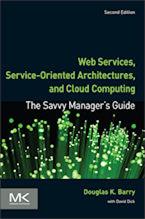Insurance XML
ACORD XML for Life Insurance: XML specification based on the ACORD Life Data Model. Organization: ACORD. More information: XML for Life Insurance page on the ACORD website.
ACORD XML for Property and Casualty Insurance: XML specification that addresses the real-time requirement by defining property and casualty transactions that include both request and response messages for personal lines, commercial lines, specialty lines, surety, claims, and accounting transactions. Organization: ACORD. More information: XML for Property and Casualty Insurance page on the ACORD website.
ACORD XML for Reinsurance and Large Commercial: XML specification that addresses real-time requirements by defining business transactions that include both request and response messages for Personal Lines, Commercial Lines, Specialty Lines, Surety, Claims, and Accounting transactions. Organization: ACORD. More information: XML for Reinsurance and Large Commercial page on the ACORD website.
Context for Insurance XML
Related Articles for Insurance XML
- Accounting XML
- Advertising XML
- Astronomy XML
- Building XML
- Chemistry XML
- Construction XML
- Education XML
- Finance XML
- Food XML
- Government XML
- Healthcare XML
- Human Resources XML
- Instruments XML
- Legal XML
- Manufacturing XML
- News XML
- Oil and Gas XML
- Photo XML
- Physics XML
- Publishing XML
- Real Estate XML
- Telecommunications XML
- Travel XML
Author
Douglas K Barry
Principal
You may use this material for your work or classes. Reprint Policy. Be sure to check the menu at the left for other articles available on this site.
The Savvy Manager's Guide
Douglas K Barry is also the author of a book that explains Web Services, service-oriented architecture, and Cloud Computing in an easy-to-understand, non-technical manner.
Web Services, Service-Oriented Architectures, and Cloud Computing: The Savvy Manager's Guide (Second Edition)
by Douglas K Barry with David Dick
This is a guide for the savvy manager who wants to capitalize on the wave of change that is occurring with Web Services, service-oriented architecture, and—more recently—Cloud Computing. The changes wrought by these technologies will require both a basic grasp of the technologies and an effective way to deal with how these changes will affect the people who build and use the systems in our organizations. This book covers both issues. Managers at all levels of all organizations must be aware of both the changes that we are now seeing and ways to deal with issues created by those changes.

